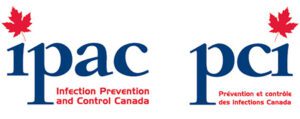What are you breathing in your condo?
What are you breathing in your condo?
Prior to early February most Canadians were spending about 85% to 90% of their time indoors. Post Covid 19, the numbers are now approaching closer to 95% – 96%. The question that just should be concerning, particularly if you live in the downtown core, is what are you breathing in your condo? The main culprit, by far, is the fan coil unit sitting in your living room or bedroom(s) because it, more than likely, contains mold. Mold is a serious health hazard and should be addressed quickly once its been determined to be within your HVAC system.
Here are a few links to some of our posts about the health issues surrounding exposure to mold; Mold and Allergies – https://mapleleafmold.ca/mold-and-allergies/ and Is hidden mold making you sick? https://mapleleafmold.ca/is-hidden-mold-a…-making-you-sick/
Why the Fan Coil Unit?
It is the largest contributor to mold growth in your condo because they are the perfect habitat for mold. They hold everything mold needs to grow; water, organic material, (such as dust / dirt that has been pulled from the air in the condo), and warmth. When you have these three components mold growth is almost guaranteed.
There is only one way to address mold contamination in a Condo Fan Coil Unit
Here’s something that will help you understand a little more about your fan coil system; https://www.youtube.com/watch?v=Dv5LvO3eDyg

How can you manage mold growth in your fan coil unit?
Even with regular pan clean out, drain lines cleaned, minor vacuuming and filter changes, every chilled water FCU is at risk of developing into a serious, hidden mould growth. Mold remediation of fan coil units should involve two processes: removing mold contamination and remedying the underlying causes such that mould will not regrow. The ideal fan coil unit installed into residents’ homes should be CSA standard for Heating and Cooling Equipment approved (CSAC22.2 No. 236-11). This standard speaks to the product’s safety and performance. Areas of concern within fan coil units are outlined below including suggested remediation practices to prevent underlying causes of mold growth:
1. Replace mold contaminated fiberglass insulation
The purpose of insulation is for sound dampening as well as to prevent the unit from sweating on the outside. The millions of glass fibers in the customary acoustic duct liner insulation cannot be effectively decontaminated. This is a poor material to use in a high humidity environment of the chilled water fan coil unit since the millions of glass fibers make for large surface areas to hold moisture and provide an ideal buffered environment for mold spores to grow and multiply. Porous insulation in a fan coil unit is like carpet in a shower stall. It needs to be
replaced with smooth, non-porous insulation material or one with an anti-microbial coating, such as the type Maple Leaf Mold Inc. uses.
2. Assess condensate pan for water pooling, corrosion and contamination. A condensate pan holds water that drips off the chilled water tube from the
condensed humidity. Existing condensate pans are flat and result in pooled water which allows fungi to grow at the air-water interface. The residue that is often
mistaken for rust can be algae or fungal bloom residue. The old, flat condensate pans should be replaced with a sloped, stainless steel drain pan so there is not
water accumulation, especially if there is any leakage.
3. Assess heat exchanger coil condition
Clean coils positively affect energy efficiency, indoor air quality and long-term system performance. After many years in service, the heat exchanger coil will
often become blocked with normal dust including mold spores that has collected on wet fins of the coil. This wet dust forms a material that can substantially block
the airflow and lower cooling and dehumidification efficiency. With regular, non-acid detergent coil washing, this obstruction can be prevented. Coil washing
involves applying non-acid detergent to the coils, allowing it to sit for some time and rinsing it off while vacuuming away the foam. Non-acid detergents are
recommended because acid chemicals can damage the coils by causing metal loss over time. The remedy for this is to clean the coil thoroughly.
4. Blower fan and housing
The blower fan moves the air across the coil and into the living space. When dirty or blocked heat exchanger coils are present, the heat exchanger coil drips
condensate water onto the blower fan and housing. This can result in water and mold accumulation in the blower housing. Some housings have drainage
nipples incorporated which allows water from the blower fan to drain away. In these cases, residents also seem to use aluminum turkey roasting pans to catch
the water dripping from the coil or fan housing. The blower fan and housing unit needs to be replaced, cleaned or modified based on its condition.
How do you know what are you breathing in your condo?
When you suspect a potential mold issue we recommend that an inspection be conducted and that the fan coil(s) in your condo be the first areas of review. Physical samples can be take at that time as well as a more detailed air quality test that identifies levels of mold as well as species.

Maple Leaf Mold Inc. is a certified mold / asbestos removal and biological disinfection / air analysis company located in Toronto that uses certified IICRC technicians for all testing and remediation projects.
We are a professionally licensed firm experienced in testing, verifying and removing Mold / Asbestos / Lead and other environmental contaminants as well as providing disinfection services to control and kill biological contaminants.
Call 416-254-7256 to talk with us about your issue anytime.



